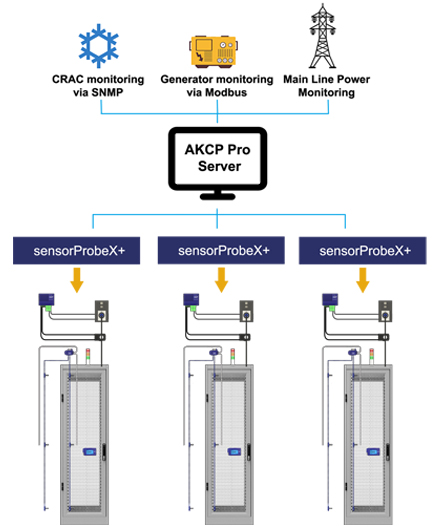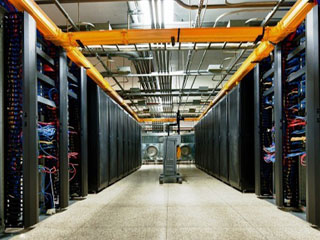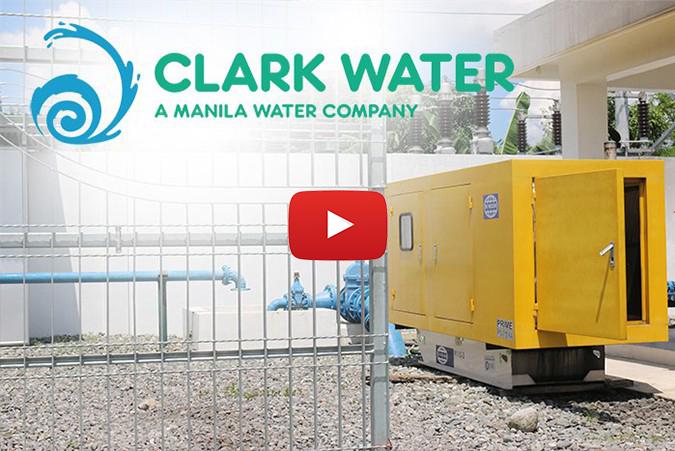Introduced last 2016, power usage effectiveness (PUE) has been the de facto metric for assessing data center energy efficiency. It’s straightforward to calculate the ratio between total facility power and power consumed by the IT load. It also provides a single statistic that non-technical users can understand. Leading facilities have a PUE of less than 1.2 and are targeting to be carbon-neutral. This fact leads many to question if PUE is relevant as it was before. Maybe a new metric is needed such as Total-power Usage Effectiveness.
With Great PUE Comes Great Responsibility
PUE would be 1 in an ideal world; every kilowatt of energy entering the data center would be used solely to power the IT hardware. While achieving a perfect 1 is unlikely, being able to evaluate energy use fast and readily has sped up progress.
According to Uptime Institute, the worldwide average PUE has declined from 2.5 in 2007 to 1.5 today. Uptime also stated that the statistic has become ‘rusty’ after such a long period.
The Green Grid standard was issued in 2016 under ISO/IEC 30134-2:2016. PUE has been one of the most popular, easily understood, and hence extensively used metrics. Its simplicity has been crucial, and consumers use it as a gauge in various ways to determine if they are being charged cost-effectively for the energy their IT requires and how sustainable they are.
In a complicated sector, buyers have recognized PUE as a clear measure of energy efficiency, and it has become intimately tied to environmental credentials.
Engineering firm Cundall, whose data center clients include Facebook, say PUE may be starting to become a victim of its success after more than a decade.
It has proven to be a very useful tool for the industry. And it has caused large gains in energy efficiency in data centers, which is the role that it was initially meant for.
People may easily wrap their heads around it on the surface, but there are a lot of flaws beneath the surface.
PUE’s Drawbacks
PUE begins to lose its significance as we approach the boundaries of what traditional cooling can do and data center owners and operators seek carbon neutrality or even negative carbon emissions.
The EU-funded Boden Type data center in Sweden has a PUE of 1.018, whereas Huawei claims their modular data center product has a PUE of 1.11. According to Google, the global average for major facilities is 1.1, although it can be as low as 1.07.
Improvements in PUE become more difficult to measure as facilities grow more efficient, and gains become more incremental.
PUE is down to 1.0-whatever today; it needs more precise measurement methods. We’re focused on achieving these sustainability targets and net-zero, and we’re doing it with a blunt instrument: a statistic that doesn’t convey the impact of what’s going on.
PUE does not capture what happens at the rack level, as an example of its bluntness. IT power to the rack can run rack-level UPS or onboard fans; energy that might and should be on the balance sheet but isn’t.
The server and PSU cooling fans consume up to 10% of the electricity given to the IT equipment in a traditional air-cooled rack. Commonly known as “creative accounting,” some organizations can improve their PUE in this way.
Not all of that computing power is used for IT. And I believe that’s something that a lot of people overlook. Many model operators install UPS at the rack level by transferring the UPS load out of the infrastructure power and into the IT power. You’re just transferring it from one side of the line to the other.
PUE Became A Marketing Metric
PUE’s ease of use and widespread adoption in the business has led to it being utilized as a competitive advantage weapon as well as an internal improvement metric.
It’s been taken upon as a marketing technique throughout time. Operators are utilizing it to attract customers, and customers are complying by submitting RFPs with minimal PUE specifications.
Many operators will enthusiastically brag about their new facilities’ PUE and utilize it to entice environmentally aware customers.
PUE was never really intended for that. Operators should measure the PUE, apply modifications, and then measure it again to assess the effectiveness.
It’s taken on a significance and a profile within the industry that it was never meant to have, and for which it’s not suited.
Liquid Cooling And PUE 
As air cooling becomes less effective, liquid cooling is becoming a more popular and viable option. However, as adoption grows, PUE’s usefulness as a metric diminishes.
Even the most energy-efficient fan motor will consume energy. With what we’ve been doing with air cooling, we’ve reached the limit of what’s possible within physics.
In a recent opinion piece, Uptime Institute warned that techniques like direct liquid cooling (DLC) drastically alter the profile of data center energy consumption “seriously undermining” PUE as a benchmarking tool and “spelling its obsolescence” as an efficiency metric.
While DLC technology has been a well-established but specialized technology for decades, some in the data center industry believe it is about to become more widely employed. Beyond just lowering the calculated PUE to reach the absolute limit, DLC reshapes the composition of energy usage of the facility and IT infrastructure.
Most DLC implementations achieve a partial PUE of 1.02 to 1.03 by lowering facility power. However, they also cut energy demands inside the rack by eliminating fans, which saves energy waste but worsens PUE.
PUE may be nearing the end of its usefulness in its current form. A probable lack of a relevant PUE statistic would signify a break in the historical pattern. Furthermore, competitive benchmarking would be obliterated. All DLC data centers will be extremely efficient, with minor energy variances.
Tracking IT use and a more granular method of measuring workload power consumption could quantify efficiency gains far better than future iterations of PUE.
Total-Power Usage Effectiveness (TUE)

Photo Credit: www.techexplorist.com
Assessing a data center’s overall energy performance using Total-Power Usage Effectiveness (TUE) is a more useful metric. IT Power Usage Effectiveness (ITUE) x PUE is used to determine TUE. The impact of rack-level ancillary components such as server cooling fans, power supply units, and voltage regulators is taken into account by ITUE. ITUE is multiplied with PUE to get TUE a data center infrastructure value.
ITUE is a rack-level PUE that addresses what’s going on in a way that PUE alone doesn’t. It’s telling how much energy is getting to the rack, and how much of that energy is going to the electrical components.
It gives you a much better knowledge of what’s going on at that level, which is that you’ve either got some serving server fans spinning around, or you’ve got some dielectric pumps, or you’ve got something else that may be passive.
TUE and ITUE aren’t new. Dr. Michael Patterson of Intel Corporation, and the Energy Efficiency HPC Working Group (EEHPC WG) both proposed the two alternative metrics around a decade ago.
Total-Power Usage Effectiveness (TUE) uptake has been slower than PUE’s. The equations aren’t significantly more difficult to solve, but TUE necessitates a deeper grasp of the IT gear in use, which many colo operators will lack.
Cundall is starting to talk to its clients about Total-Power Usage Effectiveness (TUE) and moving away from PUE, partially to ensure that all of its projects are working toward net-zero carbon, but also to help customers accomplish their own sustainability goals.
More organizations may choose Total-Power Usage Effectiveness (TUE) as a way to better demonstrate their sustainable credentials in a setting where most facilities operate at PUEs in the low 1.1s as more corporations look to deploy liquid cooling, which goes beyond PUE.
Total-Power Usage Effectiveness Is Just A Step In The Journey
Even though Total-Power Usage Effectiveness (TUE) can provide a more detailed perspective of energy efficiency, it is still only one component of the whole sustainability package. There is no single indicator that can convey the full picture of a data center’s influence on sustainability.
Many major operators now use energy credits and power purchase agreements to ensure that their activities are powered entirely by renewable energy, or at the very least matched with energy that contributes to local networks.
Further, Google and other companies such as Aligned and T5 are releasing tools that can offer a more detailed breakdown of energy use by facility, providing a more realistic picture of renewable energy use hour by hour.
To demonstrate how little water their facilities use, companies are increasingly promoting their Water Usage Effectiveness (WUE) — a ratio that divides annual site water usage in liters by IT equipment energy usage in kilowatt-hours (kwh).
Carbon Usage Effectiveness (CUE) is a metric that measures the data center’s CO2 emissions as well as the energy consumption of IT equipment.
The Swiss Datacenter Efficiency Association (SDEA) developed the SDEA Label in 2020, to rate a facility’s efficiency and climate impact from start to finish, taking into account not only PUE but also the site’s total energy recycling capability and infrastructure utilization.
Despite competition from fresh upstarts, PUE appears to be the top dog in terms of sustainability measures for the time being.
Operating at industry-leading efficiency levels in Harlow and utilizing PUE to help p us monitor, measure, and optimize our clients’ energy footprints.
Despite being aware of ITUE and TUE, PUE is still the widely accepted metric that new and legacy data centers can use to evaluate their energy requirements, optimize their ITE environments, and decrease waste.
While one could argue that the industry has been overly focused on PUE, other measures will necessitate more data, parameters, and discussion between operators and customers to set new standards and encourage acceptance. Another factor to consider for our sector is that many legacy operators may not have the financial resources to go beyond reducing PUE levels. PUE remains the best solution till that level of granularity is available.
Intelligent Power Monitoring And Beyond

Datacenter rack+ system
With AKCPro Server, the data center operator may reliably monitor, visualize, predict, and control the facility using the system model and real-time data integration with metering devices, data gathering, and archiving systems.
Energy usage monitoring gives real-time information on power consumption, carbon emissions, and temperature and humidity settings. This data is critical for the operator to discover chances for immediate power consumption reductions, energy-saving measures, and eventually lower OPEX expenses.
Rack+
Install a wired or wireless Rack+ system in your data center to monitor environmental and electrical conditions at the cabinet-level. This can scale up to a whole Smart Data Center monitoring system thanks to AKCP’s system architecture and the multitude of sensors. AKCP Pro Server can also be used to centrally monitor mainline power monitoring, CRAC systems, and backup power.
Make adjustments to your data center environment, and instantly see the effect it has on PUE numbers. Run your data center at its optimum condition for cost savings and server health.
Reference Links:
https://www.datacenterdynamics.com/en/analysis/is-pue-too-long-in-the-tooth/






